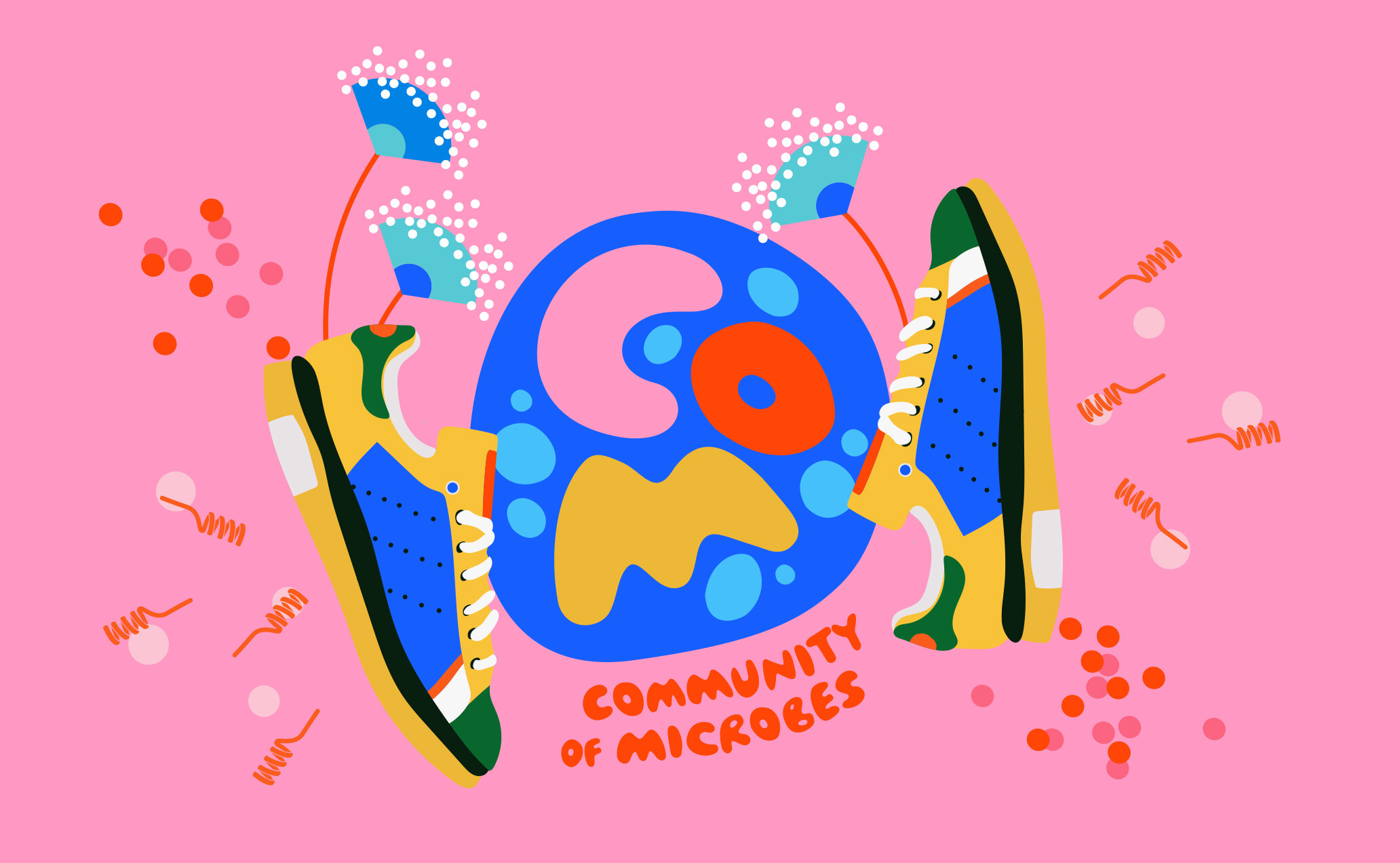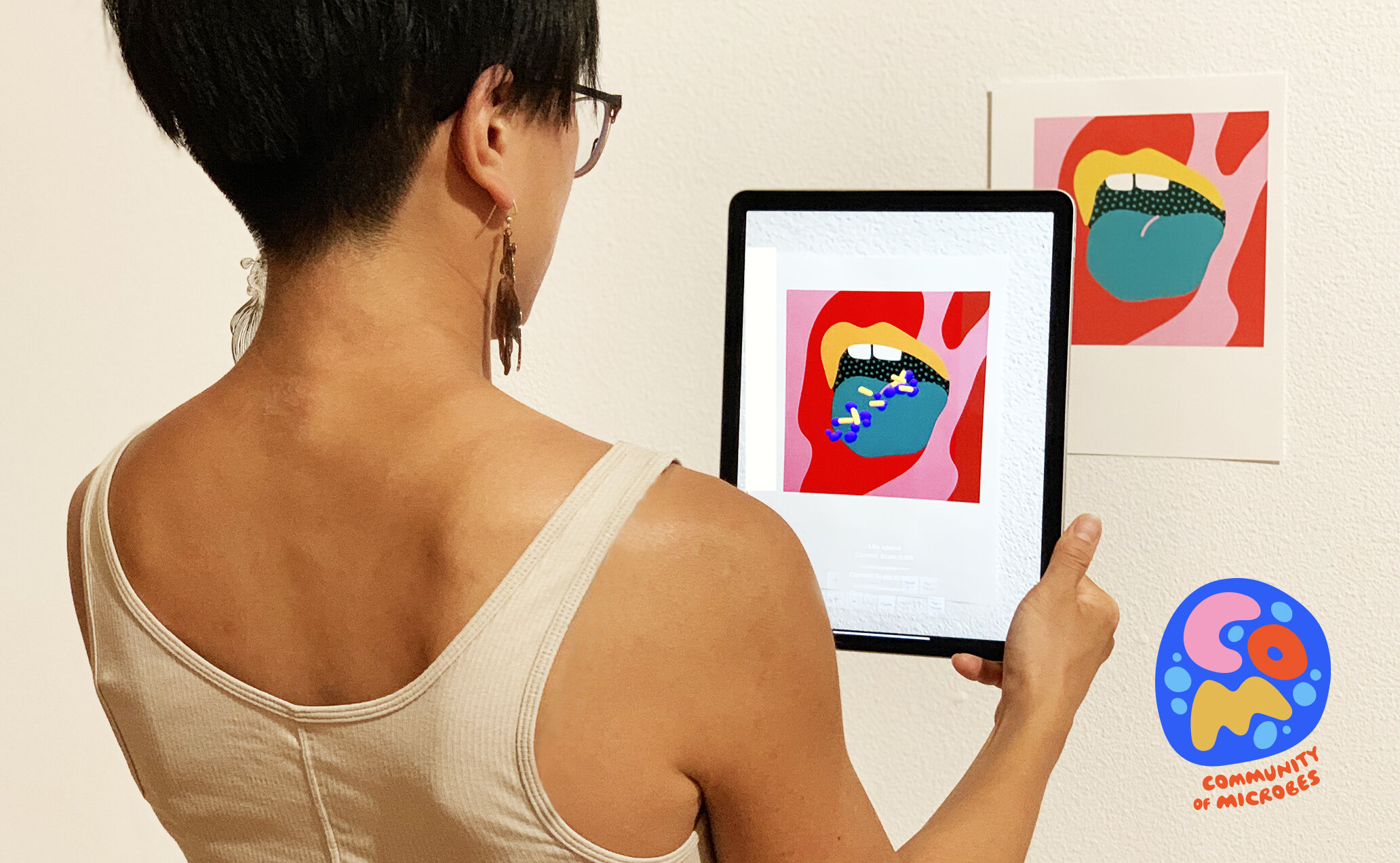
The Community of Microbes: Science + Art + AR Tech Exhibit & App
Community of Microbes is an immersive augmented reality art and science pop-up exhibit.
This exhibit, and associated learning activities were co-produced by artist and former TED fellow Amanda Phingbodhipakkiya, lead education consultant Leonora Shell, and scientist and former TED speaker Anne A. Madden, Ph.D (of The Microbe Institute.
The exhibit features eight microbial habitats, from the mundane - a bottle of beer, our shower, our mouths— to the exotic - the tips of roots, the belly of squid, and the depths of our guts. In each habitat a few microbial species are highlighted. With the power of augmented reality technology and the Community of Microbes app, animations bring them alive as you learn about the many ways they make our lives better. From learning about the yeast in beer that make our favorite flavors to the fungi that help plants grow, and even the bacteria in dust that make our life-saving medications, you’ll never look at your world the same way.
This exhibit was made possible with support from the Alfred P. Sloan Foundation. It debuted in the Cooper Union colonnade in 2019.
Try out the app at home
Download Community of Microbes App and use it to interact with the static images to learn more about the colorful, and beneficial microbes around us.
Our Partners









The NYC Exhibit
One city block.
The Community of Microbes exhibit was in the Cooper Union colonnade during the fall of 2019.
Sharing microbes.
Featuring images that come alive with the help of augmented reality technology.
With a world inside.
The inside exhibit used multi-media and AR to create an immersive exploration of the microbes in spaces as exotic as the body of squids and as mundane as the spaces between our teeth.
Interact at home with the augmented reality layer of this exhibit
Download the Community of Microbes app on your phone, then point your phone at these images and watch them come alive! Swipe up to learn more, or visit the menu to explore the habitats in more detail.
Community builders on your tongue. (AR image)
The microbial predator in your gut. (AR image)
The microbial heroes and villains of tooth decay. (AR image)
Medical helpers in your house dust. (AR image)
The microbial warfare in your gut. (AR image)
The microbes that make beer taste good. (AR image)
Microbial astronauts on your skin and in you dust. (AR image)
















